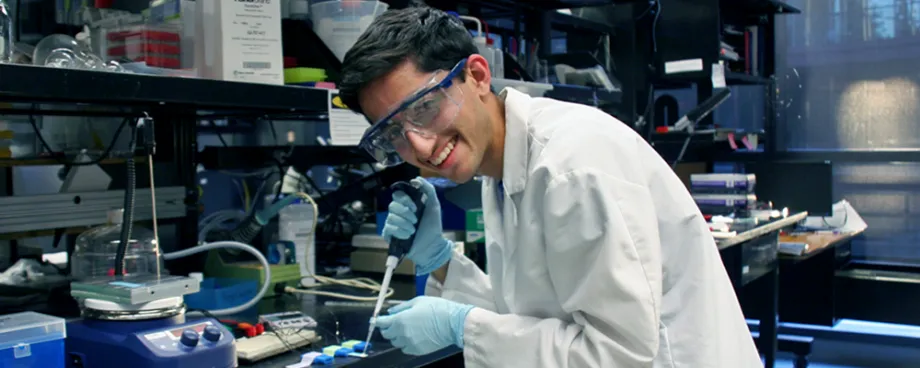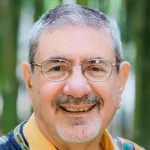
Rohan Mehrotra working in Dr. Dick Zare's Clark Center laboratory.
February 6, 2018 - by Nathan Collins
Rohan Mehrotra was just fourteen years old when he and his twin sister decided to search for a way to treat the disease that had stricken their grandfather, Parkinson’s. Now, just four years later and finishing up his senior year in high school, he’s been named one of 40 finalists in the Regeneron Science Talent Search, in part for work he conducted at Stanford.
That research, recently published in the journal Nanoscale, centered on an improved method to deliver drugs in a precisely-controlled way over time, something that could help patients with diseases like Parkinson’s.
“Rohan approached me and after I interviewed him I knew he was going to be a spectacular researcher, which has proven to be the case,” said Richard Zare, the Marguerite Blake Wilbur Professor in Natural Science, a professor of chemistry, and a founding member of Stanford Bio-X who sponsored Mehrotra’s work. “I do very much hope he will continue to work in my laboratory.”
For his part, Mehrotra is eager to do so, and it’s a goal he’s been working toward for some time. Just as he was entering high school, Mehrotra and his sister were already conducting drug experiments using a variant of the tiny roundworm C. elegans that had been modified to express a Parkinson’s-implicated protein – which, it turns out, anyone can order online.
By age 16, Mehrotra started cold-emailing professors at Stanford, which was how he met Zare. Last November, after taking part for years in local and state science fairs, he sent in an application for the Science Talent Search – a 20 page research report, a series of short essays, recommendation letters, and more. “It’s bigger than any college application,” he said.
As a finalist in the competition, Mehrotra has already won $25,000, not to mention the honor of being named a finalist. The next step is week-long series of presentations and events held this March in Washington, D.C., where Mehrotra and 39 others will compete for top honors and a prize of $250,000.
Meanwhile, Mehrotra said, he is also waiting to hear back from Stanford Admissions. “I hope I get in,” he said.
Zare is also a member of the Cardiovascular Institute, the Stanford Cancer Institute, Stanford ChEM-H, the Stanford Neurosciences Institute, and the Stanford Woods Institute for the Environment.

